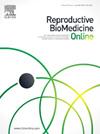MICROFLUIDIC SPERM SORTING ON FRESH AND FROZEN IVF CYCLES
IF 3.7
2区 医学
Q1 OBSTETRICS & GYNECOLOGY
引用次数: 0
Abstract
Objective
The isolation of the motile sperm without DNA fragmentation is essential for in vitro fertilization success. Recently, microfluidic sperm sorting techniques have been used for selecting the progressive motile sperms directly from ejaculate. However, the effect of microfluidic device usage on fertilization and pregnancy rate is unclear. This study aimed to evaluate the microfluidic device usage on the pregnancy rate with fresh and frozen embryos.
Study design
A retrospective study in which 249 participant was included in our In Vitro Fertilization Center has been analyzed between January 2016 and December 2018. Sperm samples from the group consisting of 144 participants were selected using the swim-up technique, as the other group consisting of 105 participants were selected using a microfluidic device. Fertile Chip® device was used for microfluidic sperm sorting preparation as the swim-up technique was applied for conventional sperm preparations. Sperm motility parameters, fertilization and pregnancy rates were evaluated.
Results
The male age, female age, mature oocyte number, and transferred embryo number did not vary significantly between microfluidic technique and swim-up technique groups. The sperm concentration, progressive motility levels, and fertilization rates were significantly higher in the microfluidic technique group (p<0.05). The clinical pregnancy rate did not differ between the microfluidic and swim-up technique groups. Interestingly, the pregnancy rate in the microfluidic technique group was slightly higher than the swim-up technique group in terms of frozen embryo transfer (Table 1).
Conclusion
The use of microfluidic devices significantly increased the fertilization rates. The routine use of the microfluidic device may show a slightly higher success in pregnancy rates.
求助全文
约1分钟内获得全文
求助全文
来源期刊

Reproductive biomedicine online
医学-妇产科学
CiteScore
7.20
自引率
7.50%
发文量
391
审稿时长
50 days
期刊介绍:
Reproductive BioMedicine Online covers the formation, growth and differentiation of the human embryo. It is intended to bring to public attention new research on biological and clinical research on human reproduction and the human embryo including relevant studies on animals. It is published by a group of scientists and clinicians working in these fields of study. Its audience comprises researchers, clinicians, practitioners, academics and patients.
Context:
The period of human embryonic growth covered is between the formation of the primordial germ cells in the fetus until mid-pregnancy. High quality research on lower animals is included if it helps to clarify the human situation. Studies progressing to birth and later are published if they have a direct bearing on events in the earlier stages of pregnancy.
 求助内容:
求助内容: 应助结果提醒方式:
应助结果提醒方式:


